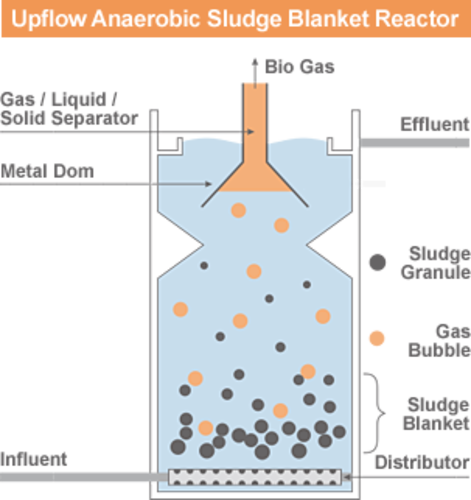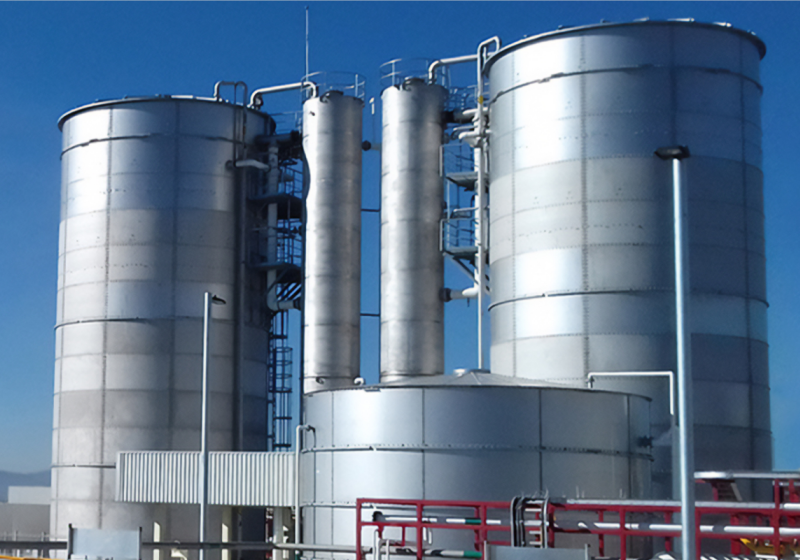UASB --- Up-flow Anaerobic Sludge Bed/Blanket
Anaerobic microorganism treatment is an indispensable treatment section in the current high concentration organic wastewater sewage water treatment process. It is better that aerobic microorganism treatment not only has low energy consumption, but also can produce biogas as a secondary use of energy. The higher the anaerobic reaction volume load is, the higher the oxygen reaction is, and the lower the investment is for treating the same amount of COD anaerobic reaction.
At present, the commonly used anaerobic treatment processes include:
UASB --- Up-flow Anaerobic Sludge Bed/Blanket
EGSB --- Expanded Granular Sludge Blanket Reactor
CSTR --- Continuous Stirred Tank Reactor
IC --- Internal Circulation Anaerobic Reactor
ABR --- Anaerobic Baffled Reactor
UBF --- Upflow Sludge Bed Filter
AF --- Anaerobic Biofilter
AFBR --- Anaerobic Fluidized Bed Reactor
USSB --- Upflow Staged Sludge Bed
AAFEB --- Anaerobic Attached microbial Film Expanded Bed
USR --- Upflow solid anaerobic reactor
PPR --- Plug Flow Reactor
Two-phase Anaerobic Reactor
UASB --- Up-flow Anaerobic Sludge Bed/Blanket
UASB is the abbreviation of Up-flow Anaerobic Sludge Bed/Blanket, which is an anaerobic biological method for wastewater sewage water treatment.
UASB consists of three parts: sludge reaction area, gas-liquid solid three-phase separator (including sedimentation area) and gas chamber.
A large amount of anaerobic sludge is left in the bottom reaction area, and the sludge with good sedimentation and coagulation performance forms a sludge layer at the bottom. The sewage to be treated flows from the bottom of the anaerobic sludge bed to mix with the sludge in the sludge layer. The microorganisms in the sludge decompose the organic matter in the sewage and convert it into biogas.
Biogas is continuously released in the form of tiny bubbles. During the rising process, the tiny bubbles are continuously merged and gradually form larger bubbles. At the upper part of the sludge bed, a sludge with thinner sludge concentration is formed due to the agitation of the biogas, which rises together with water and enters the three-phase separator. When the biogas touches the reflective plate at the lower part of the separator, it turns around the reflective plate, and then enters the gas chamber through the water layer. The biogas is concentrated in the gas chamber, and is led out through a conduit, The solid-liquid mixture is reflected into the sedimentation area of the three-phase separator, and the sludge in the sewage flocculates, the particles gradually increase, and settle under the action of gravity.
The sludge settled on the inclined wall slides back to the anaerobic reaction area along the inclined wall, so that a large amount of sludge is accumulated in the reaction area. The treated water separated from the sludge overflows from the upper part of the overflow weir in the sedimentation area, and then is discharged from the sludge bed.

#QDEVU #WATERTREATMENT #WASTEWATERTREATMENT #SEWAGETREATMENT #SEWAGEWATERTREATMENT #BIOLOGICALTREATMENT #ANAEROBICPORCESS



